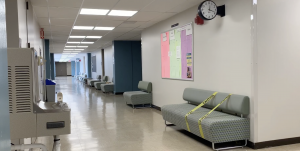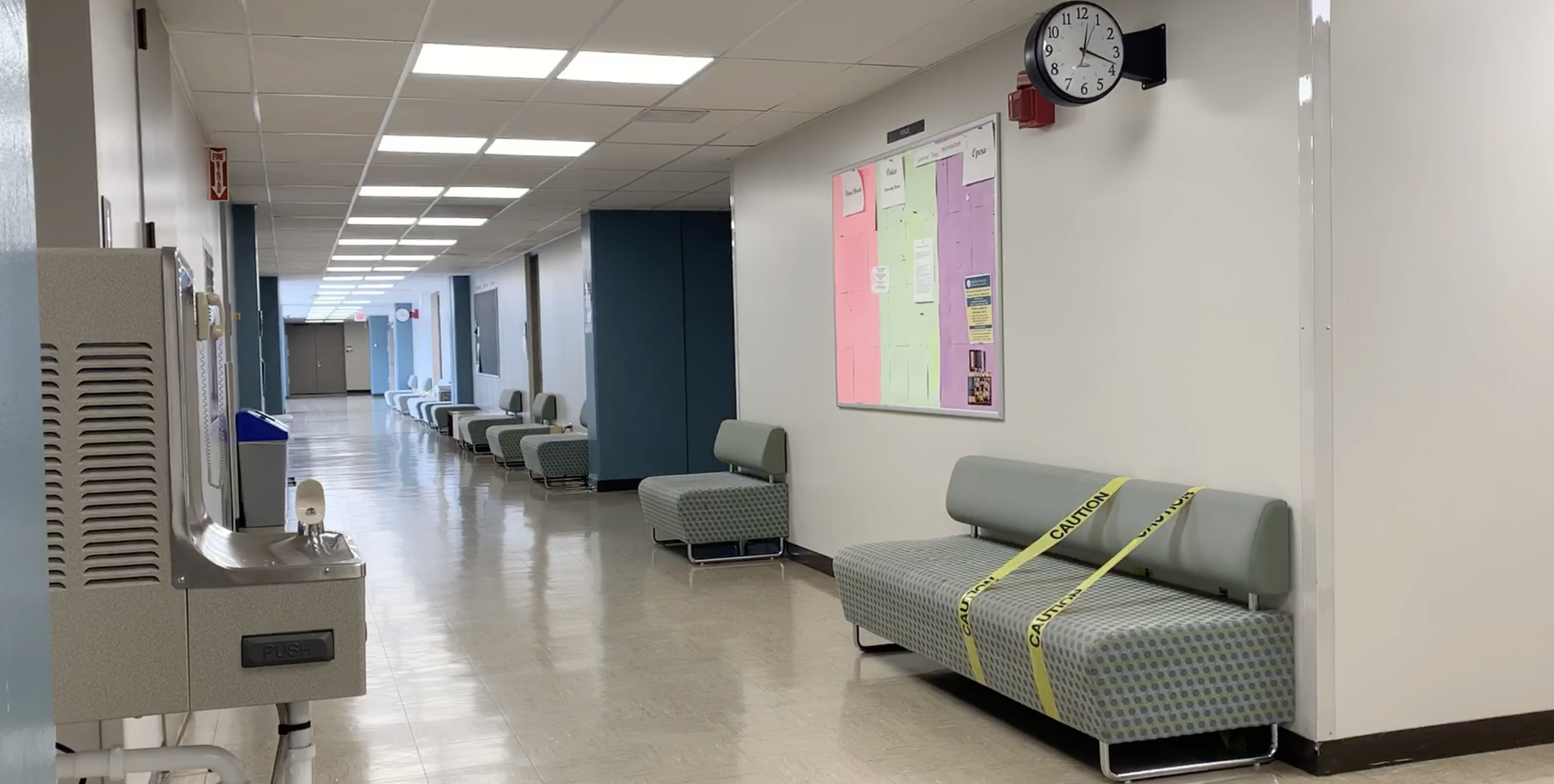By Emily McCarthy
Cliffe College of Creative Arts faces unique barriers when it comes to safety for art classes. While in most classrooms there is not much more than a desk, seat and computer to disinfect, many students must share equipment in art classes. In some classrooms, students are required to use equipment provided by the prior class for shared use.
Adjunct art professor Anthony Armeni has taught at Youngstown State University since 1990. He said the COVID-19 pandemic added many safety protocols to his classroom this semester.
“If I’m handling anything … if I’m passing anything out to the students, I’m wearing rubber gloves. I’m trying my best to maintain a six-foot [distance],” Armeni said.
Used tools, such as cordless drills and slab rollers, are wiped down with disinfectant.
Armeni teaches 3D design and introduction to sculpture hybrid courses. Fortunately, he said, the projects and courses this semester are taught nearly the same as previously. Though this semester presents its own demands, he said this past spring was most challenging for him.
“I had to develop a shift in the way I was designing my projects, so students could work with the process at home,” he said. “Sculpture class was a little different, using cardboard and found materials versus using wood and steel, and the woodshop and metal shop. That was a little challenging.”
Milo Simpson, freshman interdisciplinary studio art major, is taking a variety of art classes. His 2D foundations course is a hybrid class, which he said he only attends in person on Mondays, and is online on Wednesdays. His drawing fundamentals class, however, is completely online.

“[The instructor] actually set up a discord service for us to use, where we not only do our class meetings … she [also] has specific categories and channels for us to upload our work,” he said. “I can see the frustration and the annoyance of [online classes], but I am not really struggling.”
In his classes, Simpson said, everyone uses their own equipment. While the mix of online and hybrid classes are not what he initially expected for his first semester of college, he said he would consider taking them again.
Jennifer Kirkpatrick, studio art support specialist and part-time professor, teaches several hybrid courses this semester. She made adjustments to her courses to ensure every student is spaced out and using a minimal amount of shared materials.
“Instead of mixing our own clay from dry materials, we purchased premixed clay for the students with lab fees,” she said. “Students are required to purchase a basic pottery tool kit and a couple of other small items. Tools like our clay slab rollers, which are still shared, are disinfected between every user.”
Kirkpatrick, students and custodial staff clean using the disinfectant spray the university gave them, as well as an electrostatic sprayer she uses to disinfect work stations in between classes. One of the biggest changes, she said, is how social distancing has increased the number of classrooms being utilized.
“My ceramics class is split across four adjacent classrooms to allow for enough distancing between students, so I’m not in the same room as everyone at one time,” she said. “I have to be careful to make sure I’m dividing my time evenly between each group of students.”


